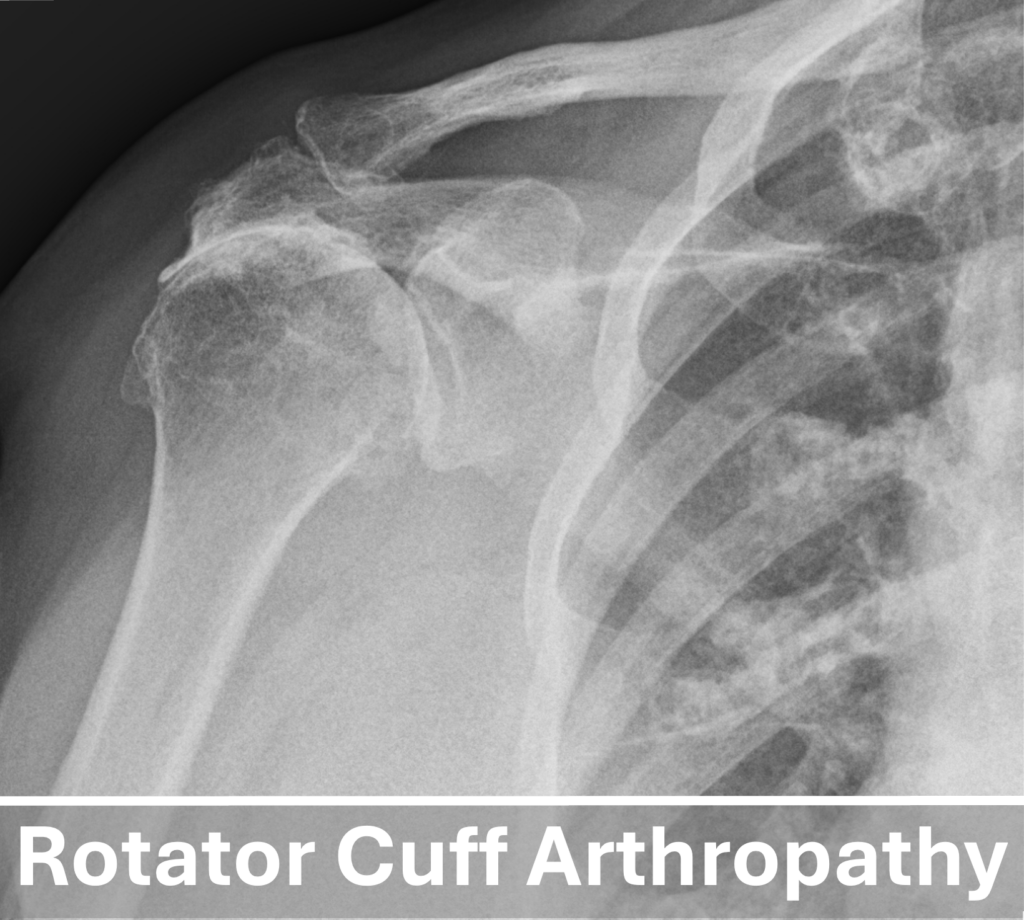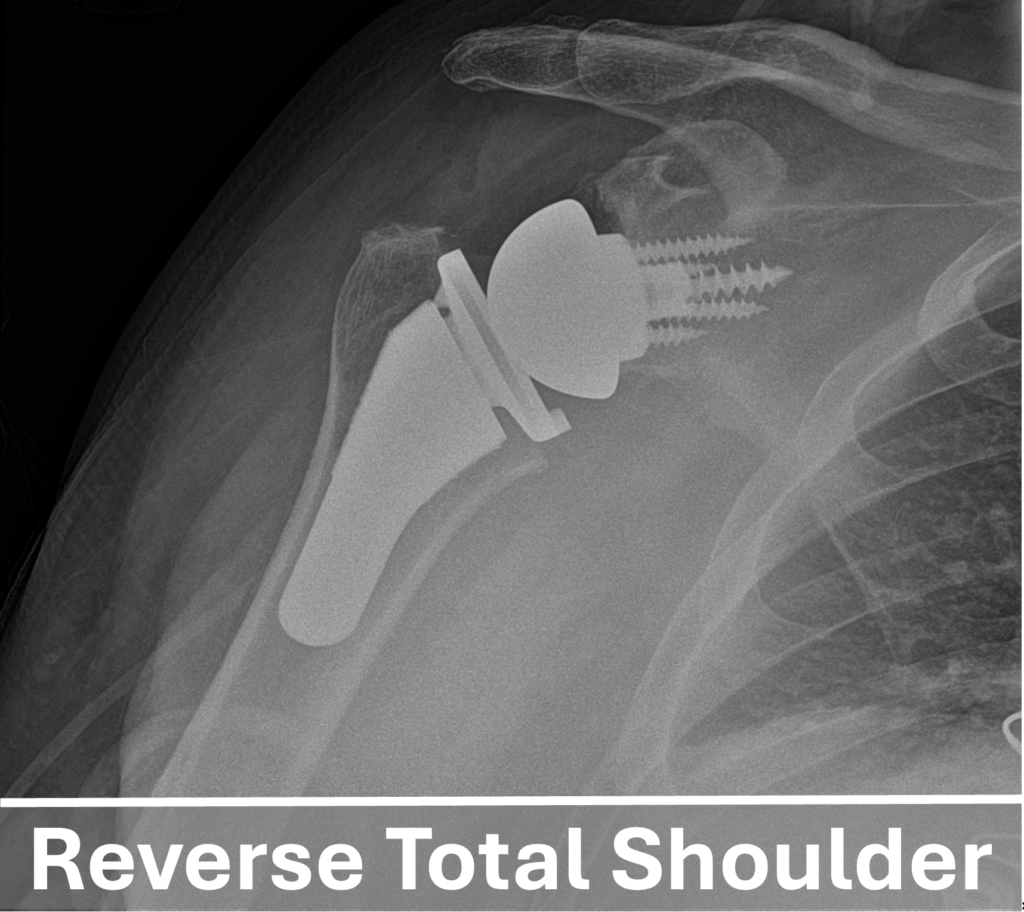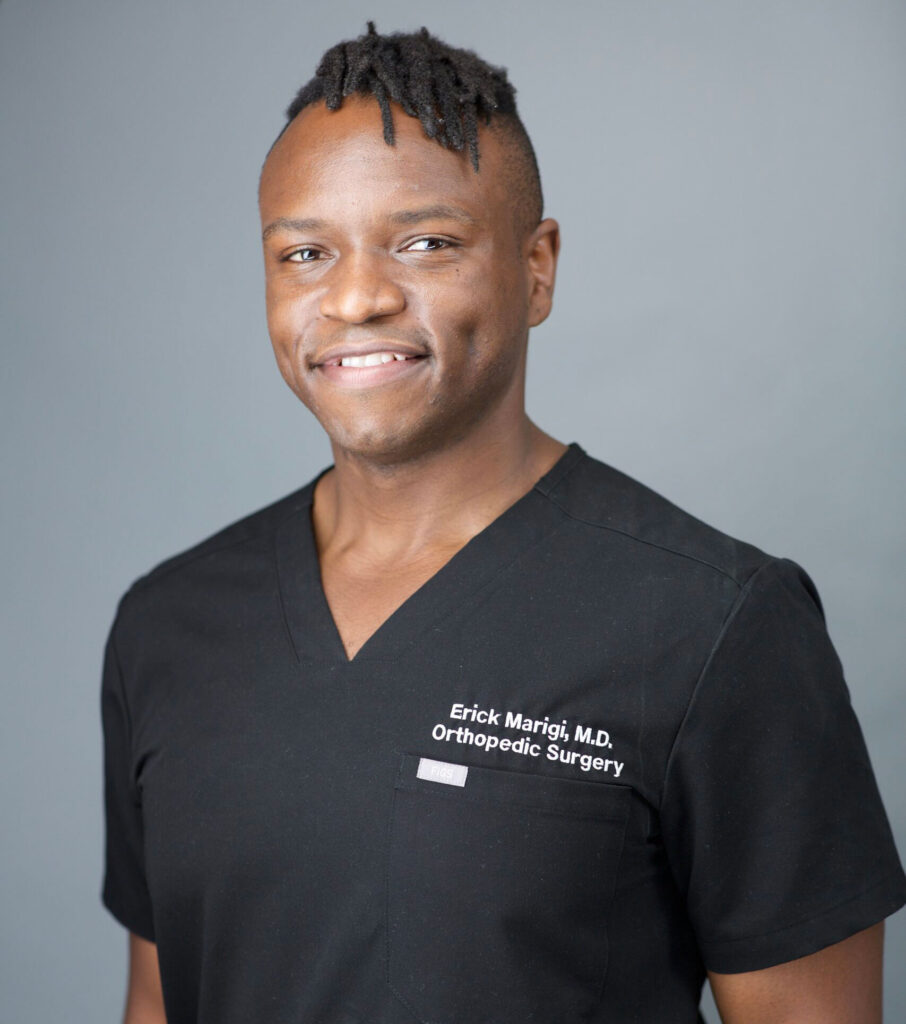Reverse Total Shoulder Replacement
Reverse Total Shoulder Replacement (Shoulder Arthroplasty)
Erick Marigi MD – Reverse Total Shoulder Replacement Surgeon
Shoulder Replacement Surgery

The shoulder is one of the most remarkable joints in the human body, enabling a wide range of movements such as forward elevation, external rotation, and internal rotation. As a complex ball-and-socket joint, its proper function relies heavily on the interplay of surrounding tissues, including the rotator cuff, scapular stabilizers, articular cartilage, and the joint capsule. Any breakdown in these structures, whether sudden or gradual, can lead to acute issues or chronic wear and tear, resulting in shoulder pain and dysfunction.

Shoulder replacement surgery is typically performed for patients presenting with activity and sleep limiting shoulder pain, stiffness, and loss of function despite a comprehensive non surgical treatment approach. Osteoarthritis (loss of cartilage), rheumatoid arthritis, rotator cuff tears, avascular necrosis, and fractures are some of the most common causes of shoulder pain and need for shoulder replacement surgery. Accordingly, the goals of shoulder replacement surgery are to relieve pain, increase shoulder function, and to improve the overall quality of life.
What is a Reverse Total Shoulder Replacement (Reverse Total Shoulder Arthroplasty)?

Since its introduction in 1987 (in Europe) and 2004 (in the United States), the reverse total shoulder arthroplasty has become a reliable procedure for managing various shoulder conditions. This modern surgical innovation is particularly beneficial for patients with conditions that traditional shoulder replacements cannot address, such as Irreparable rotator cuff tears, fractures, and chronic dislocations.
In this procedure, the positions of the shoulder’s ball and socket are structurally “reversed”. Therefore, the metal ball is attached to the scapula (where the socket normally is) and the artificial socket is affixed to the upper arm bone / humerus (where the ball normally is).
This unique design offers greater stability and allows the stronger deltoid muscles to move the arm, making it particularly beneficial for patients who do not have a functional rotator cuff. It is also helpful for those with significant bone deformities, complex shoulder fractures, or previous unsuccessful shoulder surgeries. Due to these advantages, the reverse total shoulder replacement has become the most common type of shoulder replacement surgery performed in the United States.
Who is a Candidate for a Reverse Total Shoulder Arthroplasty?
A reverse total shoulder replacement may be suitable for patients experiencing severe shoulder pain and disability that has not improved with non-surgical treatments. This procedure is often recommended for individuals with the following conditions:
- Shoulder Arthritis with Rotator Cuff Tears: This includes types of arthritis like osteoarthritis, rheumatoid arthritis, or avascular necrosis, especially when accompanied by torn rotator cuff tendons.
- Rotator Cuff Arthropathy: This is a special kind of arthritis that develops primarily from a chronic loss of a functional rotator cuff.
- Massive Irreparable Rotator Cuff Tears: Patients with large rotator cuff tears with fatty muscle degeneration and limited shoulder movement.
- Complex Proximal Humerus Fractures: These fractures are the third most common in people over 65 and are often due to osteoporosis, a condition that weakens bones.
- Chronic Shoulder Dislocation with Arthritis: Persistent dislocations combined with arthritis.
- Previous Unsuccessful Shoulder Replacement: Patients who have had shoulder replacement surgery that did not yield the desired results.
What is the Recovery Process After a Reverse Total Shoulder Arthroplasty?
- After your surgery, your care team will closely monitor your progress and help manage any discomfort as you begin your recovery. Some patients may stay in the hospital overnight, but most will recover at home or in a nearby hotel if they have traveled for the procedure.
- To protect and support your shoulder, you will need to wear a shoulder immobilizer for the first 3 weeks. Most people can return to normal daily activities, like dressing and grooming, within the first two weeks.
- Supervised physical therapy is an important part of recovery and typically lasts about 3 months. Full recovery, allowing you to return to all activities, can take anywhere from 4 months to a year.
If you are considering a shoulder replacement (shoulder arthroplasty) or want to learn more about the stemless anatomic total shoulder arthroplasty, contact Dr. Erick Marigi, an orthopedic shoulder surgeon serving the communities of Jacksonville, Florida and beyond.
At A Glance
Erick M. Marigi, M.D.
Shoulder Surgeon and Sports Medicine Specialist
- Fellowship-trained Orthopedic Sports Medicine and Shoulder Specialist at the Mayo Clinic in Florida, the No.1 hospital in Florida as ranked by U.S. News & World report.
- Expert in the entire spectrum of shoulder conditions and sports-related injuries with over 100 peer-reviewed publications.
- Assistant Professor of Orthopedic Surgery at the Mayo Clinic College of Medicine and Science
